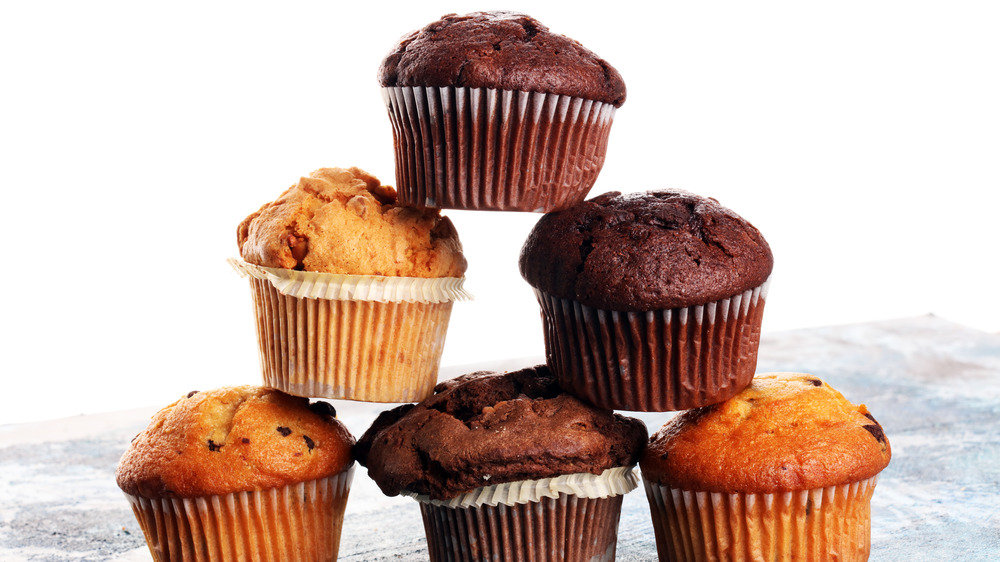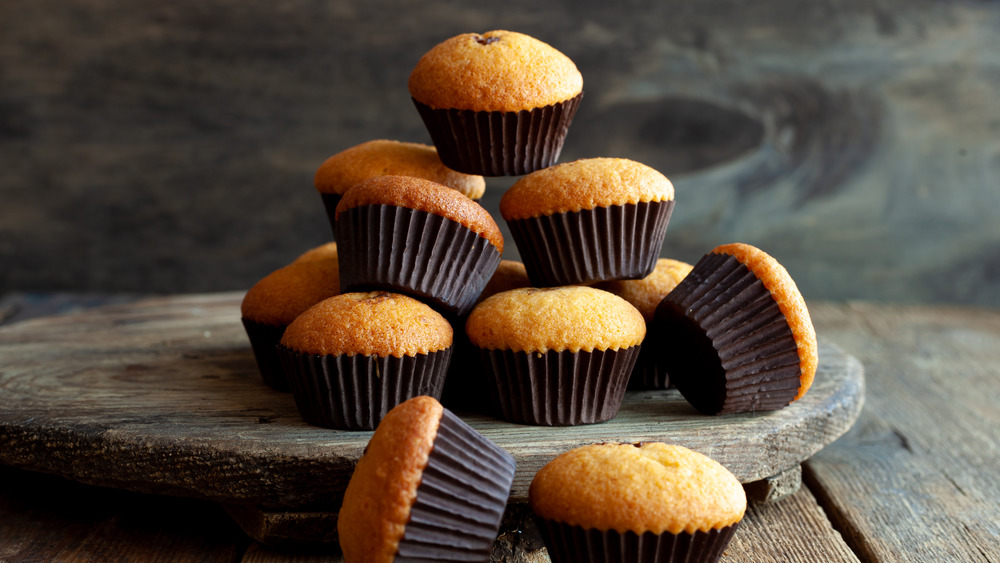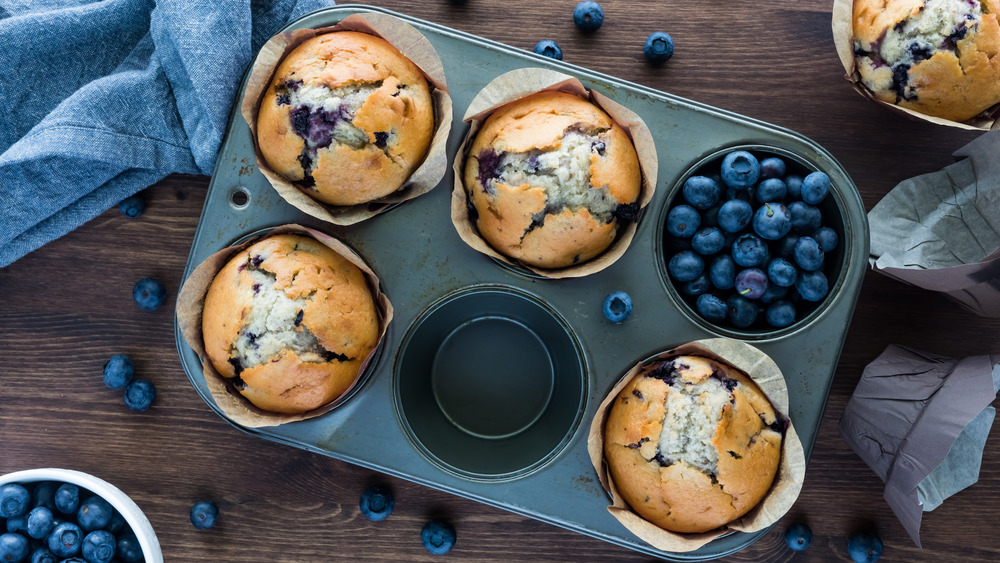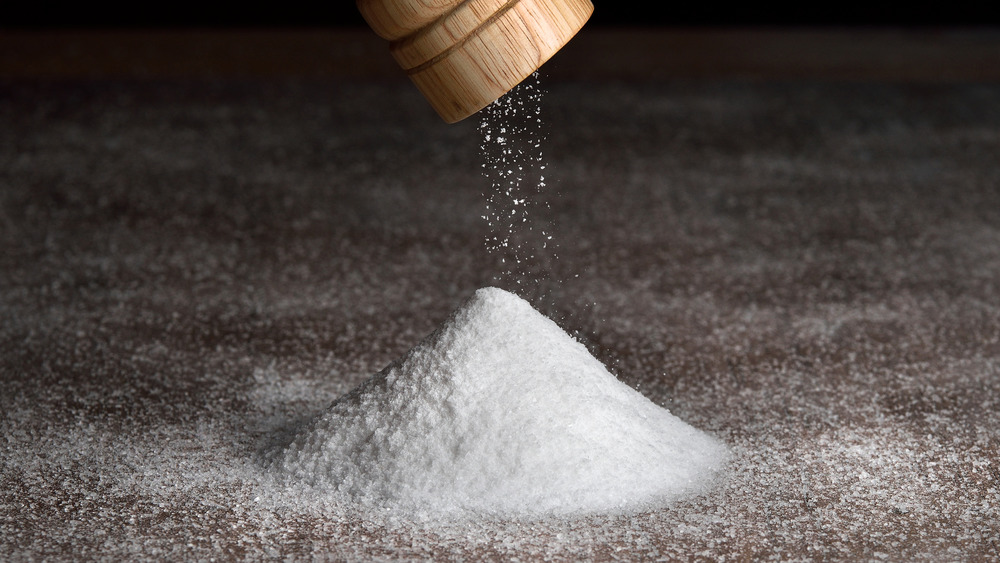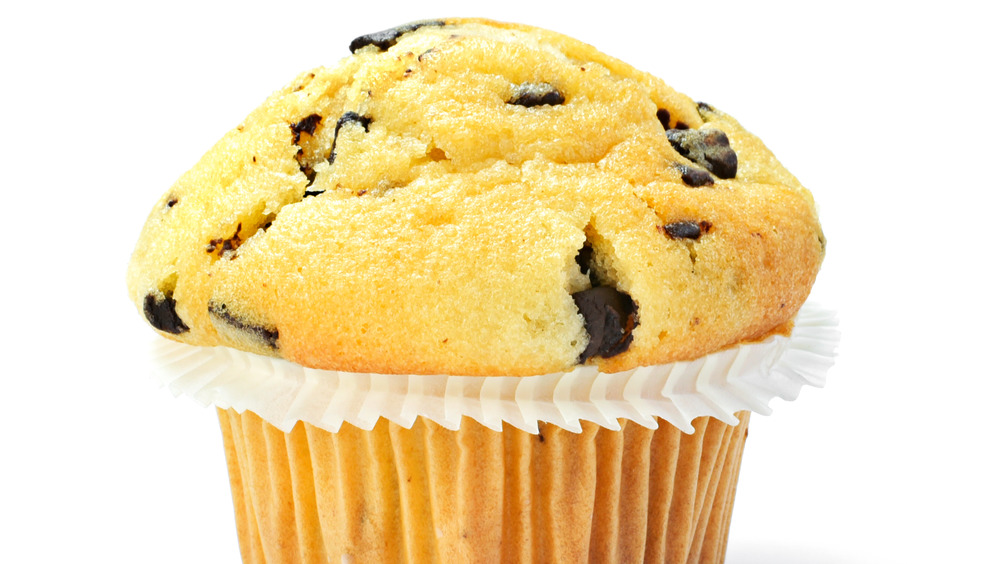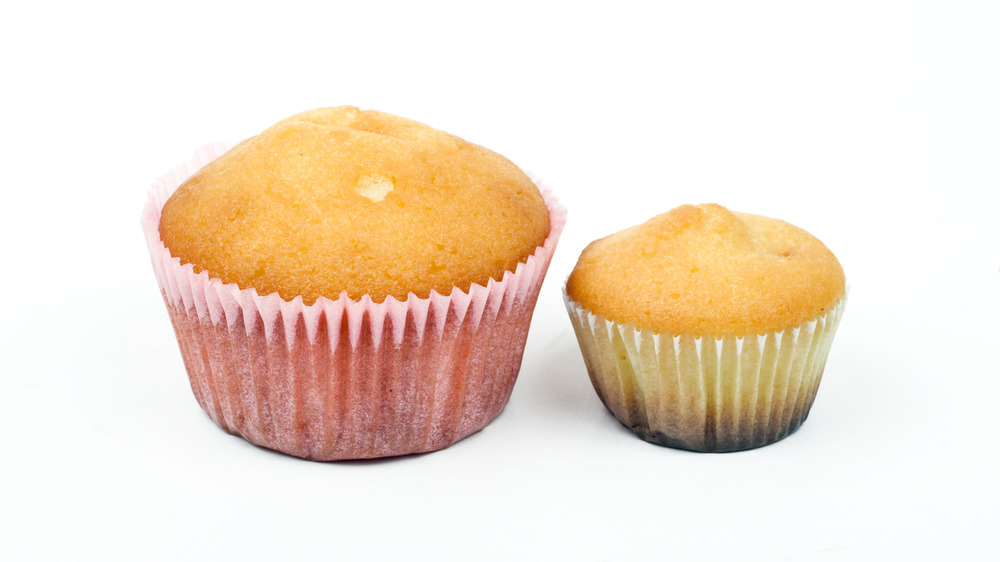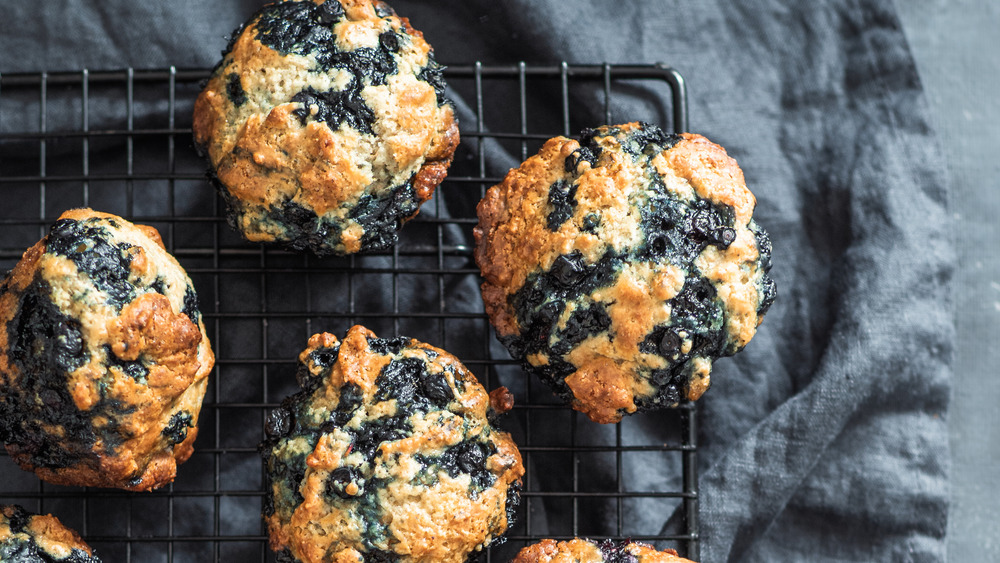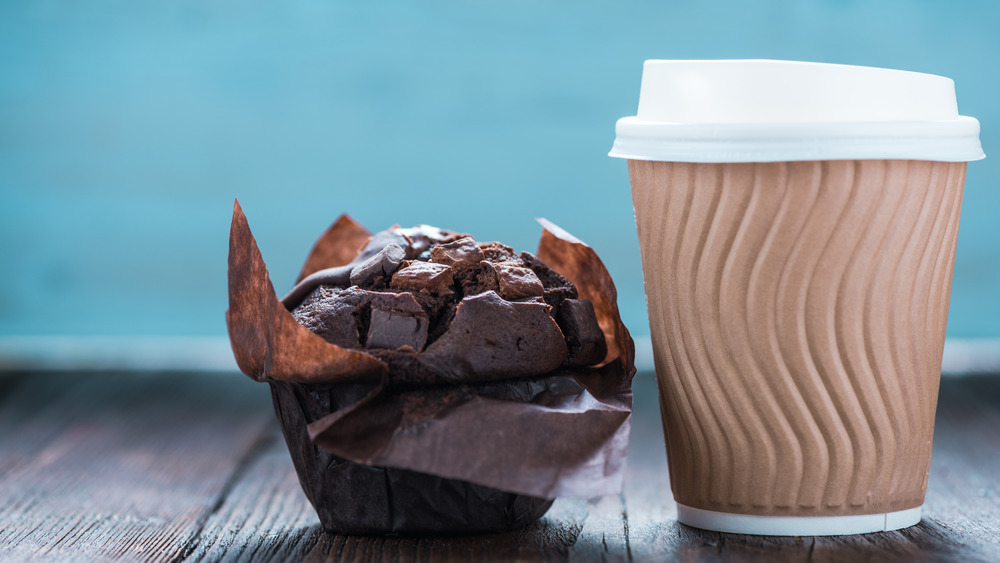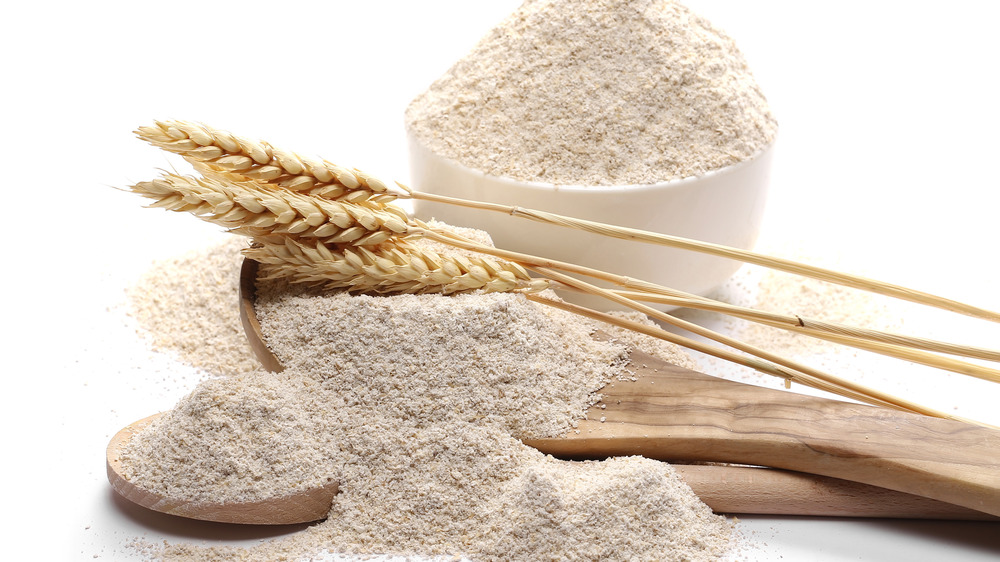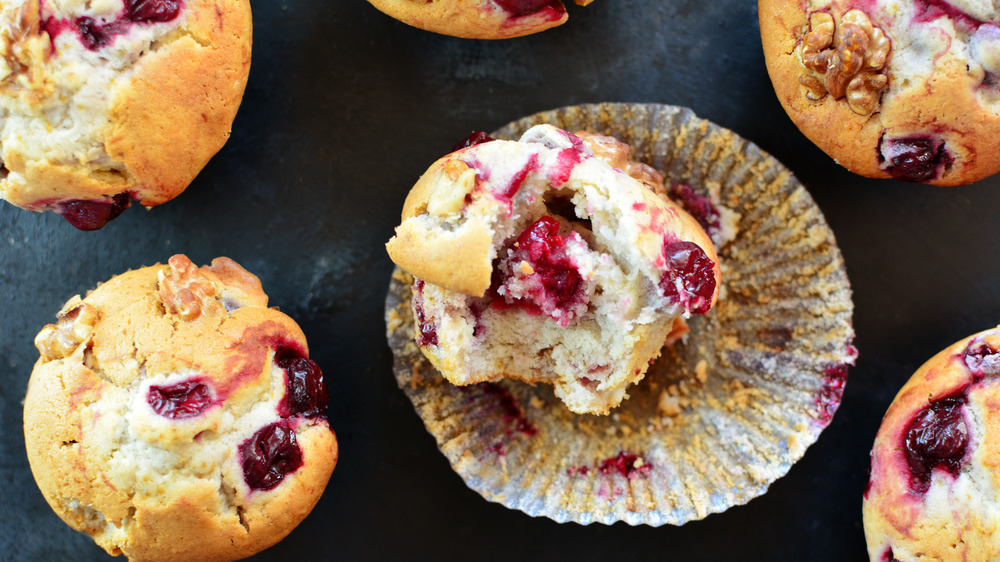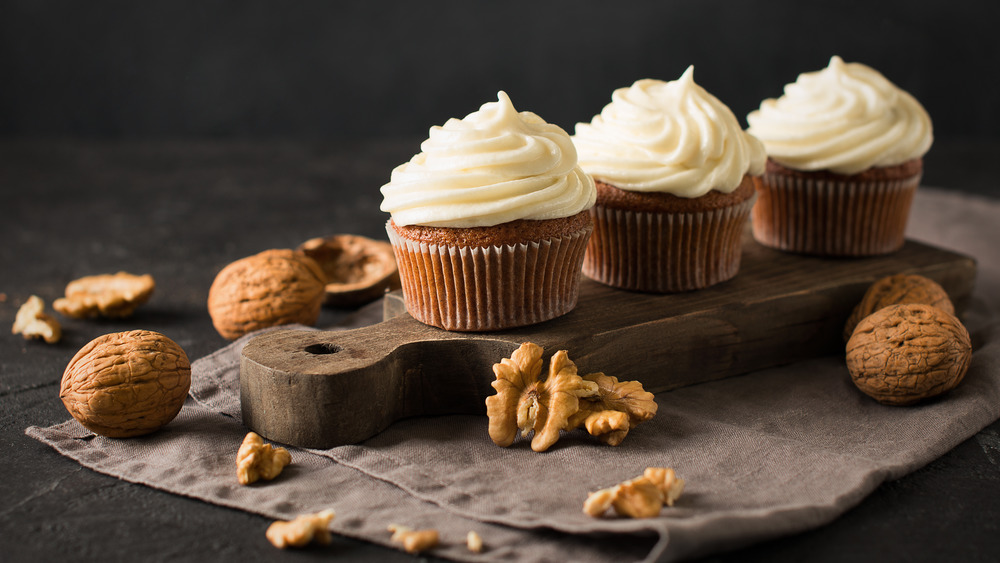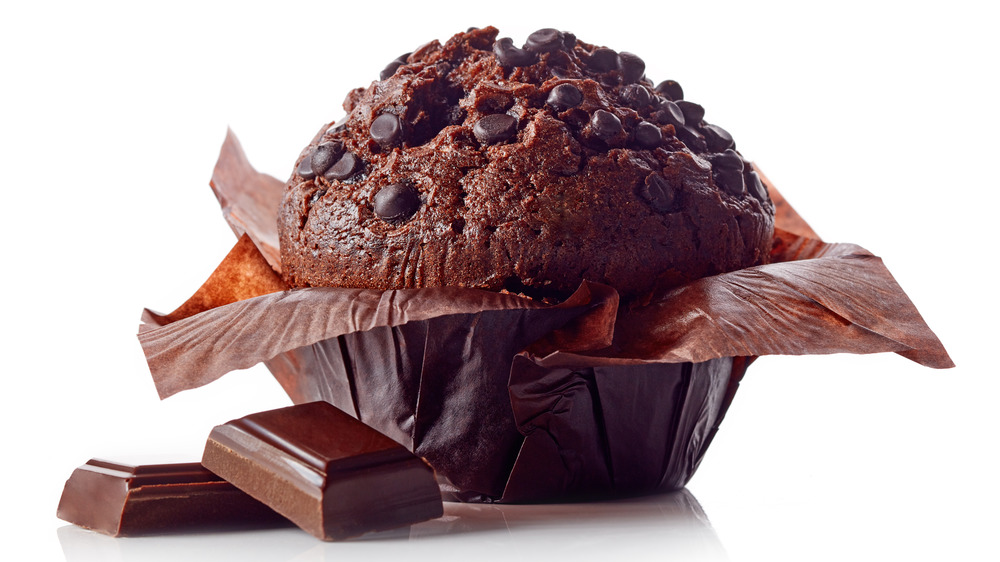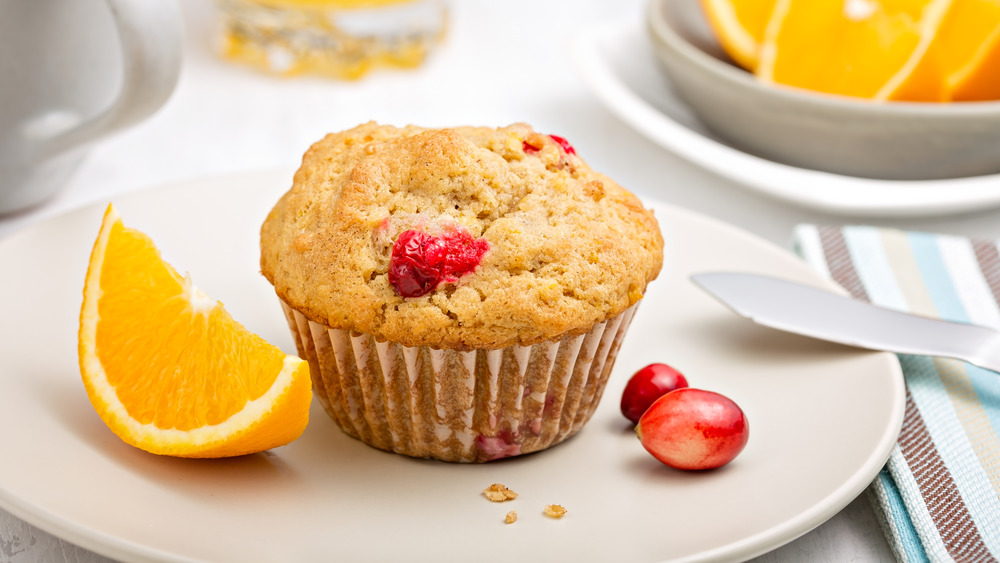Read This Before You Take A Bite Of Another Muffin
Mmm...muffins, right? Blueberry, bran, orange-cranberry, zucchini, chocolate chip, and raspberry, we love them all. Soft on the inside and with a perfectly golden muffin top, they're pure comfort. They can be eaten at any time of day. And they're best served warm, often with butter.
However, the commercialization of muffins has turned the baked good from a homemade treat into a supersized meal. Modern muffins are high in sugar, sodium, calories, and saturated fat. And those double chocolate muffins? Muffins with icing? Are those actually muffins? Turns out that even homemade ones are often little more than cupcakes parading as muffins these days. Tasty as that might be for an occasional indulgence, it's definitely not a healthy start to your day, even if there's some grated carrot involved.
And what about bran muffins and vegan muffins — are those even worth making? Ultimately, the trick is knowing what to look for in the nutritional breakdowns, while doing some research into the most popular muffins available near you. And if you get frustrated, you can always make your own, which are often a lot healthier than what you'll find in fast food restaurants, convenience stores, cafes, and grocery stores.
So before you take a bite of another muffin, read this!
Muffins are usually super high in fat
Fat, in and of itself, isn't bad for you, but saturated fat (and excess fat) probably isn't what you need. Those can cause heart disease and increase your risk for stroke by increasing your "bad" cholesterol (via Mayo Clinic).
A single coffee cake muffin from Dunkin' clocks in at 24 grams of total fat and 8 grams of saturated fat, according to Eat This, Not That! That's 40% of your recommended daily value of saturated fat (via CalorieKing). Moreover, the American Heart Association says you should only really be having about 13 grams of saturated fat per day, which would turn that 40% into 62% of your daily recommended intake, according to them.
There's no need to single out Dunkin', though. The double chocolate muffin from Second Cup has a whopping 53 grams of fat and 8 grams of saturated fat. And the McDonald's blueberry muffin, though better than Dunkin', has 22 grams of total fat and 3.5 grams of saturated fat.
Meanwhile, a Starbucks blueberry muffin has a total of 14 grams of fat, with 2.5 grams of that being saturated fat, making it a relatively better option. With a lot of sugar and refined flour, though, it's far from a healthy morning option, but we'll get to sugar next.
Muffins are high in sugar, too
Sugar also isn't necessarily a bad thing, but too much of it (especially refined sugar) over a short period of time without enough fiber to slow down how quickly it's absorbed into the bloodstream can lead to type 2 diabetes (via Mayo Clinic). It can also make you jittery, irritable and lead to an unwanted sugar crash. We all want energy, but a muffin might not be the best and most sustainable way to get it.
A relatively low-fat Starbucks blueberry muffin contains 33 grams of sugar and just 1 gram of fiber (via Fast Food Nutrition). Meanwhile, a McDonald's Cranberry Orange Muffin has 36 grams of sugar. And its Banana Chocolate Chunk Muffin has 40 grams. Even worse, that Dunkin' coffee cake muffin has 51 grams of sugar and just 2 grams of fiber. The chocolate chip flavor actually has less sugar, but we'll get to chocolate and whether that's actually a true muffin flavor or not in just a moment.
Muffins can be surprisingly high in sodium
You might not think muffins are salty, but you'd be surprised. A single carrot-walnut muffin from Au Bon Pain has about 820 mg, or 34% of your daily intake, according to Fitbit. One of the cafe chain's low-fat triple berry muffins has 720 mg of sodium. Meanwhile, its blueberry muffin has a relatively tame 330 mg of sodium, but 25 grams total fat, making this very much not a snack muffin.
Why should you care about sodium? It's bad for blood pressure, for one. High blood pressure can cause heart disease (via the Centers for Disease Control and Prevention). The good news is that sodium levels fall as soon as you start reducing your sodium intake. Yes, you need a little bit of salt for your body to function, but it's probably less than you think. According to the FDA, you only need about 2,300 mg a day, far less than what most people actually consume on a regular basis.
Muffins can be high in calories
We've covered sugar already, so you might not be surprised that a lot of commercial muffins are also often high in calories. And we're not just talking fast food muffins, either. The ones you pick up at the grocery store are generally high in fat, sugar, refined wheat and starches, and sodium, too. You probably already know that excess sugar and calories can cause you to gain weight, as your body typically stores the extra calories as fat. So if you think you're sticking to your low-cal diet by snacking on muffins, you might want to check the nutritional info first.
Those calories can stack up pretty fast, especially once you realize that most nutritional information assumes you're aiming for 2,000 calories a day (though even that amount of calories may be too high for many of us). Consider that a pumpkin muffin from Au Bon Pain has 570 calories. A chocolate chip muffin from Dunkin' has 550 calories.
How do you keep your muffin calories down? The easiest way is by keeping your serving size down and by looking for muffins made with natural sweeteners like applesauce and yogurt instead of oils and butter. The upside is those tend to be lower-fat, too. But keep in mind that even low-fat muffins aren't necessarily low-calorie, either, so always remember to consider the nutritional info if you can.
Muffins are usually supersized
Are you really going to cut your muffin in half before you eat it? If not, you could be getting a lot more calories, sugar, refined flour, preservatives, and fat than you bargained for.
The truth is that muffins have gotten bigger over the years. According to the University of Nebraska-Lincoln, a typical muffin was a lot smaller 20 years ago — less than half the size, in fact. The Harvard School of Public Health says that to keep up with healthy nutrition standards, a baked good should be 50% smaller than what you'll generally find. Hence, you should be cutting it in half to make it a decent serving size. But who's really going to be doing that?
So what are your other options? When faced with a gargantuan muffin, it might be best to not think of it as a snack in between meals. Maybe pair it with a salad or raw vegetables to keep from eating the entire thing at once. It can be pretty hard to eat just a muffin for lunch and feel satisfied, especially with all that refined sugar making you feel hungry. Or better yet, just make your own.
Vegan muffins aren't necessarily healthier
Think vegan muffins are automatically better for you? Think again. Replacing eggs, butter, and any other dairy with hydrogenated oils and refined starches can be just as high in carbohydrates, sugar, calories, and fat as non-vegan muffins. Even if the muffins are organic, it doesn't mean they're much better (via Toronto Star).
Another downside of vegan muffins is that because they don't use eggs, they're often heavier and denser. Since they require more ingredients to give them the look and size of a non-vegan muffin, they're often even higher in calories. But that's not always the case. Often, vegan muffins are trying to be healthier and will use lighter ingredients like applesauce and vegetable purees to give moisture without excess oil or fat. Plus, vegan egg substitutes like aquafaba can provide lift without lots of extra calories.
Soy milk and other non-dairy kinds of milk also often have similar added vitamins and minerals to regular milk, making them more nutritious. And vegan muffins are sometimes even made gluten-free to appeal to a wider audience, which often means whole-grain non-wheat flours. The trick is to ask about the ingredients and find a nutritional breakdown if you're curious about your neighborhood coffee shop's selection. They might not have one, but asking might make them think a bit harder about it and potentially change their menu (especially if you're a regular and ask nicely).
Non-homemade muffins can have tons of preservatives
If a muffin needs to sit on a shelf or counter for days or if it's already sat in a warehouse for a while before making it to that shelf, it's going to need a little help to stay moist and tender. To be fair, you'd probably need some help, too. That's why a lot of commercial muffins are chock full of preservatives (via Belgoods Bakeware). Have you looked at the ingredient lists on the plastic 6-packs of muffins at your local grocer? There probably isn't even an ingredient list on the ones in the self-serve, see-through counters at the convenience store, but rest assured it's probably longer than you may want to see.
Even a muffin from a local coffee shop can surprise you. A blueberry muffin from Dunkin', for example, includes mono and diglycerides, sodium stearoyl lactylate, sorbitan monostearate, polysorbate 60, gelatinized wheat starch, and carnauba wax to help things appear fresh. Meanwhile, the blueberry muffin from Starbucks is a fair bit more natural, with soy lecithin acting as a mild preservative (via SF Gate). The rest are ingredients you might use in your own homemade muffins.
Why is it important to limit high-processed foods? Foods with a lot of preservatives may potentially be linked to some chronic diseases, says Livestrong, though research into the links between preservatives and human health is still ongoing.
Muffins made with refined wheat flour don't have a lot of fiber
In muffins without a lot of fiber, simple sugars and refined wheat flours can cause an insulin spike as they're absorbed quickly into the bloodstream. Even if it's bleached, flour can still be highly refined. Bleached flour means that the wheat germ and wheat bran are removed and are treated with chemicals to theoretically make the finished flour better for baking by aging it more quickly (via Healthline). Unbleached flour is still often refined but just isn't treated chemically.
If you see "enriched wheat flour," that means the refined grains have had vitamins, folic acid, and sometimes iron added back into them after being stripped of those nutrients (via Healthy Grains Institute). They're not more nutritionally dense than the original grain, but the additions are just trying to make up for some of what's been taken away. Whole grain flours (not to be confused with whole wheat flours), are much better for you. They keep the bran and germ of wheat grains, which contain more nutrients.
Low-fat muffins aren't always better for you
The low-fat trend is arguably well and truly over, but saturated fat and excess fat are still bad for you regardless of diet trends. So should you buy that low-fat muffin? The answer is "maybe." It depends on what's in it. If it's full of artificial sugar, then generally no you shouldn't buy it if you're looking for something healthy. If it's full of real sugar and sodium to replace the delicious flavor of fatty butter, milk, and eggs, then no, you probably still shouldn't buy it.
If it's low-fat from using applesauce, bananas, or another puree, then maybe you should buy it, depending on how refined the flour is. You might be better off with a muffin made with whole-grain flour but which contains lots of eggs and butter, compared to one made with refined wheat flour and applesauce. And sometimes you just want to eat for pleasure, meaning that an occasional treat like a sweet muffin isn't so bad if you really keep it occasional. It's all about balance, after all.
An iced muffin is really just a cupcake
If your muffin has icing, it's no longer a muffin. Even if it has grated carrots, flaxseeds, zucchini, walnuts, or any other healthy-sounding ingredient, it's officially passed into cupcake territory. Bran might be the only exception, but if you iced a bran muffin in buttercream, most people would probably still call it a cupcake. A weird cupcake, but a cupcake nonetheless.
What about a thin smear of sweetened cream cheese on top of a carrot muffin? A glaze of honey syrup? Streusel? Debatable, but if there's icing sugar involved, you don't have much room for argument.
Now, the true debate is whether a muffin can still be a cupcake without frosting. Spoon University says yes. The differences between the two might actually be pretty surprising, once you start to dig into the matter. Basically, if you can pour your alleged muffin batter into a round cake tin and bake it into a cake, it's a cupcake. That's where the name comes from, after all. A cake in a cup, alas, does not equal a muffin.
Don't fool yourself into thinking a chocolate muffin is good for you
Let's get down to numbers. The double chocolate muffin from Second Cup? 81 grams of carbs, 53 grams of fat, and 44 grams of sugar give it a big thumbs down in terms of health. A Kirkland double chocolate muffin? 38 grams of fat, 590 mg sodium, 79 grams carbs, and 48 grams sugar. Basically, anything that's full-on chocolate is not going to be a healthy morning treat when combined with refined flour and sugar. Meanwhile, the chocolate chip muffin from Dunkin' is also a health disappointment.
That's not to say that a little bit of cacao in the morning is a bad thing. So if you really want a chocolate muffin, try making them yourself. You can also switch out certain ingredients. like applesauce for fats or less refined sweeteners like honey or agave. You could also use a lower-fat Greek yogurt to substitute for oil and egg in muffins and other baked goods, too.
Muffins can be healthy and tasty
Feeling pretty down about muffins now? Never fear. At the end of the day, you can still have your muffins and eat them, too.
One way to make muffins a little healthier is by using less and fewer refined ingredients, from sugars to flour. That often has the positive side effect of increasing the fiber content while you're at it. Often, those replacement ingredients include fruit or vegetable purees. Non-pureed substitutions for health include unsweetened yogurt, bran, whole-grain flours, oats, and unrefined oils. And if you're still missing all that sweet, sweet refined sugar, try sweetening your muffins with dried fruit or fresh or frozen berries.
If you're starting to get wrapped up in all the things you might want to take away from your muffin mix, consider some additions that you can make, too. These could be flaxseeds, almond flour, and other nuts and seeds, all of which can help you end up with more protein. Increased fiber and protein will keep you feeling full for longer, according to Harvard Medical School. Another upside!
